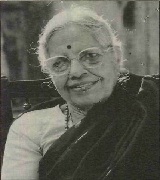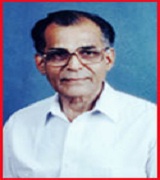Main Feature

Profile - S. Sarada
When Sarada retired from Kalakshetra in 1985, she was acknowledged as a diligent scholar and a fine teacher, but when she came to Kalakshetra in 1939, she was but a young woman of 24, well acquainted with various works on art and advaita but still a non-entity. Though Sarada had formal education only upto Standard VIII, she had the good fortune to be educated at home by her grandfather, Pandit Subramania Sastri of Tanjavur. She studied with him the Sanskrit plays of Kalidasa, and works like Kuvalayakandam and Siddhanta Kaumudi. She assisted him in reading the proofs of works on music, natya and Vedanta, both in Sanskrit and in Tamil; she also read the Yogavasishtha and the Gita with the commentaries of Sankara, Ramanuja and Madhwa. Her grandfather used to ask her to repeat the Dakshinamoorthy sloka which made her understand the advaita philosophy better.
Interview

Interview with G.S. Mani
During my travels to various places, 1 used to come across people who, on coming to know that I was going to give a music concert, would say that their children could also sing. When I asked these children to sing for me, quite often they would sing film songs. And they would sing quite correctly, without veering from the raga-s in which the songs were set. If I enquired whether these children were not interested in learning music properly, often the reply was that classical music seemed to be very complex, with so many raga-s and other technicalities. The implication was that these children did not have the competence to learn art music. I would then sing little bits and tell them what their raga-s were. This kind of thing happened several times. This made me feel that people in general did have some idea of music and interest in it. So I thought it would be a good idea to explain the raga-s through film songs, enlightening them about an unknown angel through a known devil, as it were!


